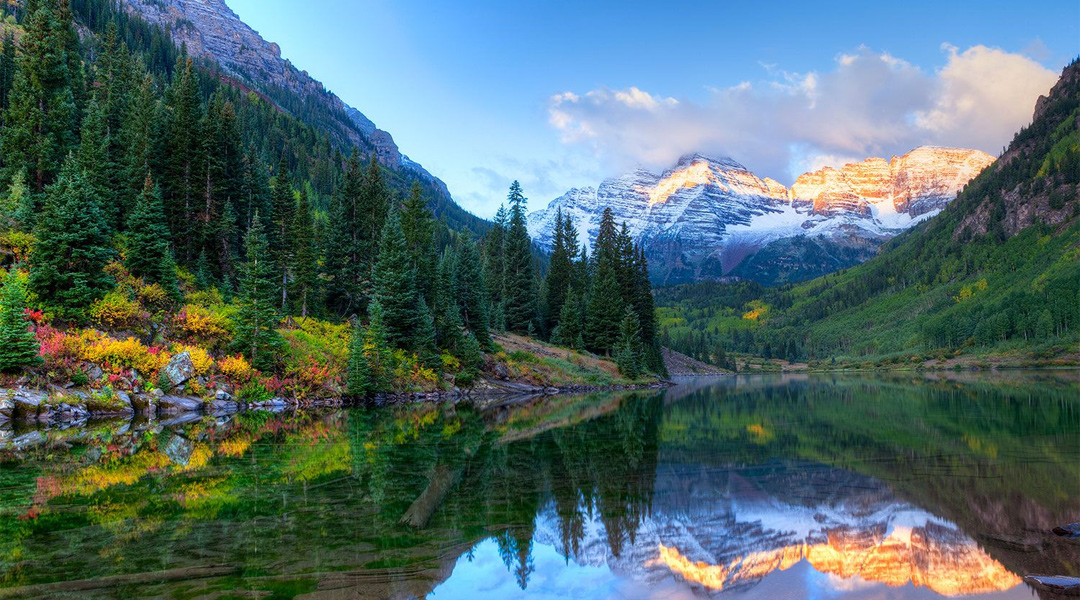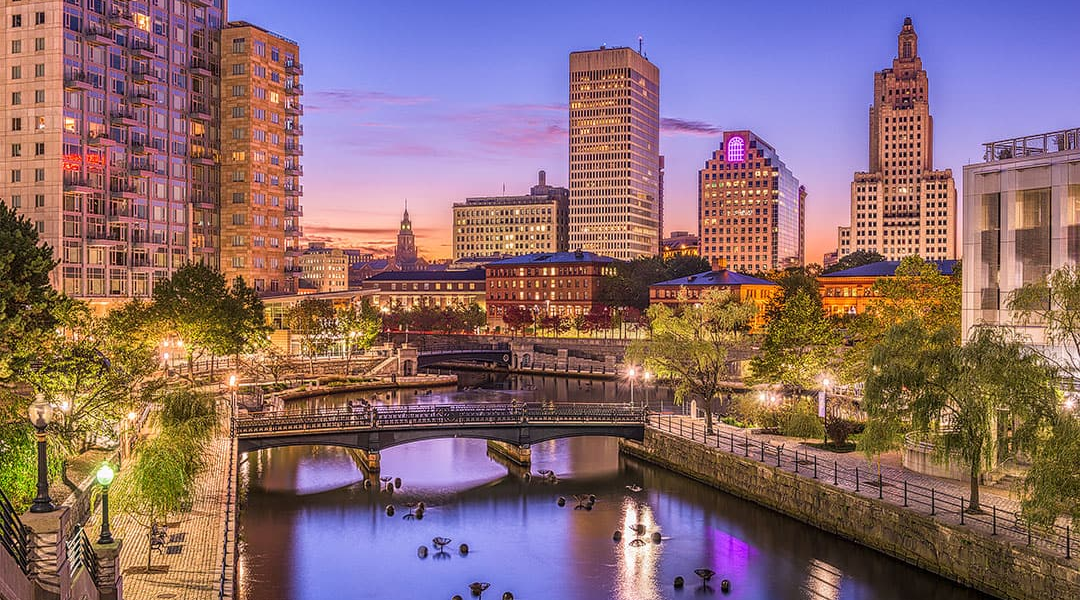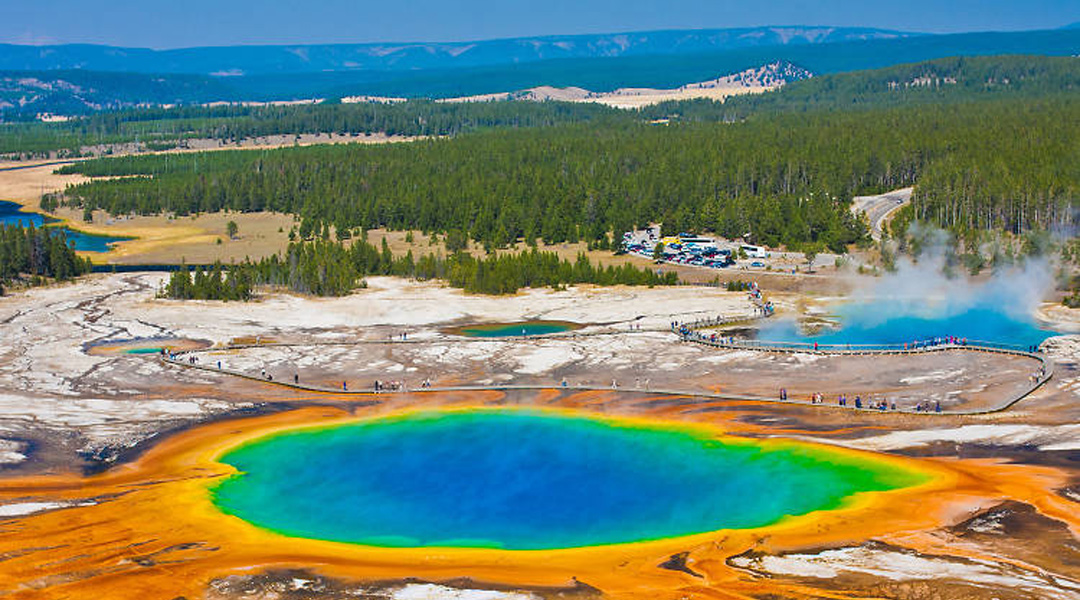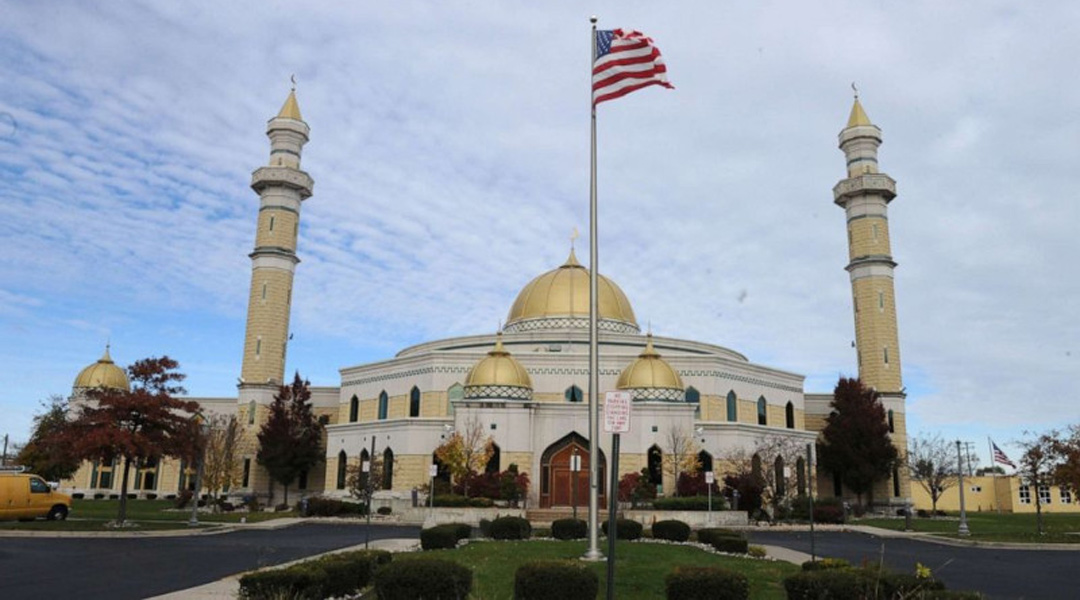You could spend a lifetime exploring the most beautiful places in America, as exciting as they are diverse. In one corner of the United States, you'll find temperate rainforests and rocky beaches; then just travel south to encounter white-sand deserts and the grandest of canyons. Or head to New England, where forested mountains and farmlands dazzle far beyond leaf-peeping season. And don't forget about Hawaii and Alaska, two treasure troves of natural beauty that encourage folks to explore beyond the contiguous US.
Whether you're looking for nature's greatest hits or hidden gems that take a little digging to find—or you simply want to plan your next great cross-country road trip—this list of the 50 most beautiful places in America is sure to inspire.

Acadia National Park, Maine
Acadia National Park is an essential stop on any Maine road trip, but you can—and should—visit the park even if you're not already in the area. Those photogenic lighthouses and sunrises atop Cadillac Mountain are certainly worth traveling for.

Angel Oak, South Carolina
A 13-mile drive from downtown Charleston, South Carolina's Angel Oak is easily one of the most beautiful places in America. Entrance to the surrounding forest is totally free—just park in an adjacent lot and open your car door; you'll hear nothing but crickets, birdsong, and treetops rustling in the breeze.

Antelope Canyon, Arizona
Antelope Canyon is a slot canyon—and serious Instagram darling—in the American Southwest, just east of Page, Arizona. The narrow, undulating spaces between rock formations allow for vivid patterns when sunlight filters through the striated stone.

Antelope Valley, California
California is famous for its wildflowers, especially Antelope Valley's rolling hills of poppies (the official state flower). Visit on a sunny April day, sometime around mid-morning, to catch the eye-popping shades of orange and yellow in all their glory.

Apostle Islands National Lakeshore, Wisconsin
This 21-mile edge of Lake Superior is a year-round destination for outdoor adventurers: Not only can travelers go kayaking through the wave-carved sandstone cliffs in the warmer months, but people can even walk across the frozen lake and explore the ice caves in the winter.

Atchafalaya Basin, Louisiana
You can find America's largest swamp, the Atchafalaya Basin, just west of the Mississippi River in Louisiana. It's home to pretty much every type of flora and fauna the word “swamp” conjures—alligators, Spanish moss, egrets, and bald cypress—and some of the region's best Cajun restaurants can be found in nearby Lafayette and New Iberia.

Badlands National Park, South Dakota
Found in the southwest corner of South Dakota, Badlands National Park greets visitors with an otherworldly landscape of rust-colored buttes, spires, and pinnacles rising across thousands of acres. Blink and you might think you've been transported to another planet.

Big Bend National Park, Texas
Known for its hiking, camping, and epic sunsets and sunrises, Big Bend National Park consists of more than 800,000 acres of river canyons, desert, and mountains, plus thousands of species of plants and animals.

Big Sur, California
If you want to plan an iconic American road trip, drive from San Francisco to Los Angeles along Highway 1. Along the Pacific Coast Highway, you'll stop on the Monterey Peninsula before snaking along through the wilderness of Big Sur, complete with stunning cliff views over the bright blue ocean.

Block Island, Rhode Island
Block Island is a New England getaway at its best, complete with lighthouses, seagrass-lined beaches, and 30 miles of hiking trails. There are several nature conservatories on the island, the most popular being the 190-acre Clay Head Preserve on the northeast coast, which features a series of unmarked, interconnected walking paths known as “the maze.” It's worth visiting any time of year, but it happens to be one of the island's best leaf-peeping spots in the fall.

Bonneville Salt Flats, Utah
Sprawling more than 30,000 acres on the Utah-Nevada border, the Bonneville Salt Flats will make you see the world in a different way. The chalk-white landscape stretches so far out in all directions that you can actually spy the curvature of the earth, and aside from the dry heat, walking across the salty crust feels a bit like touching frost-covered grass first thing in the morning.

Blue Ridge Parkway, North Carolina
The 469-mile stretch of road known as the Blue Ridge Parkway, which winds from Shenandoah National Park to the Great Smoky Mountains National Park, is regularly cited as one of America's best drives. The entire roadway could be considered one big scenic overlook.

Crater Lake, Oregon
Reaching depths of 1,949 feet, the awe-inspiring Crater Lake—about a 4-hour drive south of Portland—is the deepest lake in the U.S. Its contents are supplied entirely by glacial runoff and precipitation, hence the water's clarity and intense blue hue.

Cumberland Island, Georgia
This barrier island off Georgia's southeast coast is something of a hidden gem, only accessible by boat from the small mainland town of St. Marys. Cumberland Island's relative inaccessibility means the nature here is gloriously untamed—think overgrown oak trees, wide marshes, and wildlife ranging from horses to alligators—though you may spot a former Carnegie mansion if you know where to look.

Door County, Wisconsin
This narrow peninsula jutting off the northeast of Wisconsin is one of the Midwest's most beloved vacation spots, thanks to an abundance of charming towns and beaches sitting off the shores of Lake Michigan. The region is perhaps most stunning in the spring (April–May), when its famous cherry trees reach full bloom. Spend an afternoon walking through rows of white-blossomed trees before enjoying a cherry bourbon smash, a drink fashioned with locally grown cherries and bourbon whiskey, as a more-than-appropriate nightcap.

The Everglades, Florida
Occupying 1.5 million prime acres of Southern Florida, these famed wetlands are one of the world's most varied (and fascinating) ecosystems. Be sure to check out our guide to the Everglades' best airboat tours and alligator lookouts before your next trip.

Denali National Park, Alaska
Denali National Park gets more than a half-million visitors a year, and it's easy to see why. The park is a wild and massive landscape (we're talking 6 million acres) of snowy amphitheaters, glaciers, ice caves, and mountains. You can even climb Denali—just note that it's a major undertaking, so read up on all the information before attempting.

Glacier National Park, Montana
It's little wonder why Glacier National Park is one of the most-visited parks in the country. With its pristine mountain lakes, glaciers, 700 miles of hiking trails, and road trips along Going-to-the-Sun Road, the park represents some of the best nature the US has to offer.

Grand Prismatic Spring, Wyoming
Pretty much every square inch of Yellowstone National Park is worth seeing in person—but if we had to pick just one striking landmark within the park, it would be the Grand Prismatic Spring. As its name suggests, the largest hot spring in the United States is essentially a rainbow ring of vibrant colors, affording the best views from the top walkway (drones are not allowed here, so don't even think about it).

The Grand Canyon, Arizona
No list of beautiful places in the U.S. would be complete without the Grand Canyon. We could tell you all about the sunsets and views and epic hikes along this 277-mile-long chasm, but honestly? This is one you need to see for yourself.

Grand Teton National Park, Wyoming
Jutting up to 13,775 feet above the prairie-like landscapes of Wyoming, the magnificent Teton mountain range feels almost like a mirage. Visitors can enjoy nearly 200 miles of hiking trails, go rafting in the Snake River, and maybe even spot a grizzly bear or two.

Great Sand Dunes, Colorado
Set against the Rocky Mountains, the Great Sand Dunes of Colorado (the tallest dunes in North America) look like they were transported straight from the Sahara. It takes hours to climb to the top of the dunes from the parking lot, but the feeling of standing alone, hundreds of feet in the air, is unquestionably freeing.

Grinter's Sunflower Farm, Kansas
True to its “Sunflower State” nickname, Kansas has some of the best blooms in the country. Every year from August to September, Grinter's Sunflower Farm in Lawrence (about 30 miles west of Kansas City) attracts thousands of visitors eager to view—what else?—sunflowers. The 40 acres of flowers are easy to get lost in, especially when you consider the fact that each stalk stretches between five and seven feet high.

Hamilton Pool, Texas
The 50-foot waterfall and jade waters at the Hamilton Pool Preserve (just west of Austin) are not to be missed. The site was formed thousands of years ago when an underground river collapsed, leaving us with a natural swimming pool worth the hike.

Hanging Lake, Colorado
Hanging Lake is one of Colorado's most popular hiking destinations—and one of the most beautiful, too. The water somehow manages to be clear yet turquoise (thanks to dissolving carbonate minerals), giving us a peek at the trees and branches beneath the surface. And those waterfalls? Well, they only increase the dreaminess factor.

Hoh Rain Forest, Washington
The Hoh Rain Forest is one of the only rainforests in the US, with lichen-shrouded trees and fungus-covered logs hidden in the middle of Washington's Olympic National Park. The Hoh River Valley is also home to the quietest spot in the contiguous 48 states, according to Gordon Hempton, an expert “acoustic ecologist.”

Jenne Farm, Vermont
Jenne Farm is the epitome of Vermont charm, with rolling green hills and a striking red barn. You can find it on a country road off Route 106 in the town of Reading, but you might have to dodge a few crowds along the way—the spot is one of the most photographed farms in the world, even making a cameo appearance in Forrest Gump.

Kenai Fjords, Alaska
Alaska is home to more than 3 million lakes, but we have a bit of tunnel vision when it comes to Bear Lake. Located in the Kenai Fjords National Park, the site stands out for its massive glaciers, vertical rock structures, year-round water sports (kayaking, ice skating, dog mushing), and viewings of the Northern Lights from September through April.

Letchworth State Park, New York
New York's Greater Niagara area has some seriously beautiful spots outside of the Falls—most notably Letchworth State Park, aka “ the Grand Canyon of the East.” Whether you experience the park from a hot-air balloon or the 66 miles of surrounding hiking trails, do try to plan your visit during prime leaf-peeping season.

Lake Tahoe, Nevada
Lake Tahoe is the largest of the alpine lakes in North America, formed millions of years ago during the Ice Age. Set in the Sierra Nevadas, it receives worldwide acclaim for its scenic mountain views, luxe ski resorts, and Nevada casinos—not to mention water so clear that you can see to the bottom.

Martha's Vineyard, Massachusetts
Martha's Vineyard is a favorite summer escape, lined by rugged Atlantic beaches and dotted with quaint towns. Head to the southwestern tip of the island (locally known as “up-island”) for more undeveloped and rural scenery, including dense woods, uncrowded beaches, and fishing villages.

Mendenhall Ice Caves, Alaska
The ice caves inside Juneau's Mendenhall Glacier are not easily accessible nor for the faint of heart—those who want to see them in person must first kayak to the glacier and then ice-climb to reach it. But once adventurers stand under the glowing blue ceilings of ice, we're pretty sure they'll tell you it's worth the trek.

Molokini Crater, Hawaii
Snorkeling at Molokini Crater, located between the islands of Maui and Kahoolawe, is one of the most colorful experiences available in the Hawaiian islands. This half-in, half-out-of-water crater boasts a reef and hundreds of varieties of underwater species that aren't too shy to approach tour boats and divers.

Mono Lake, California
An abnormally high amount of salt—about twice as much as the ocean—and eerily beautiful tufa formations (made from built-up limestone) make Mono Lake, California's largest natural lake, almost too cool to believe.

Monument Valley, Arizona
Sitting like a western movie backdrop in Arizona's Navajo County, Monument Valley will probably be recognizable to anyone who has taken a road trip through the American Southwest. The 91,696-acre space is defined by its towering sandstone structures, mesas, and sandy landscapes—all of which make for perfect photo opportunities.

Na Pali Coast, Hawaii
Easily the most striking coastline in America, the Na Pali (“high cliffs” in Hawaiian) Coast is only accessible by boat, helicopter, or strenuous hike—and it is 100 percent worth the effort. This northwest edge of Kauai has towering waterfalls, crescent beaches, and sea caves just waiting to impress you.

Oneonta Gorge, Oregon
The basalt walls of the Oneonta Gorge are draped in brilliant green mosses and ferns, making it one of the quintessential sightseeing spots in the Pacific Northwest. The attractions is part of the massive Columbia River Gorge, which means you can also see cliffs and waterfalls during your excursion.

Outer Banks, North Carolina
The Outer Banks (or OBX, according to many a bumper sticker) refers to a string of barrier islands cupping North Carolina's entire coast, with some of the best beaches and historic attractions in the state. You can explore several of the islands in one day by following N.C. Highway 12, stopping at sites like the Cape Hatteras National Seashore and Bodie Island Lighthouse along the way.

The Palouse, Idaho
The rolling region of the Palouse covers 4,000 sq. miles of northern Idaho and southeastern Washington. The loess hills resemble sand dunes in shape (probably because they were formed by wind-blown sediment, not erosion), but become a dreamscape of varying shades of greens during the wet spring months.

Sequim-Dungeness Valley, Washington
If you thought you had to travel to France to see endless fields of lavender, you clearly haven't been to Sequim, Washington before. As if the Olympic Peninsula's beaches and mountains weren't incredible enough, Sequim's lavender farms add another perfect (and fragrant) option.

Shenandoah National Park, Virginia
With more than 500 miles of hiking trails, Shenandoah National Park is a massive retreat just an hour and fifteen minutes away from D.C. in the Blue Ridge Mountains. Besides hiking, you can do almost anything in the park—fishing, horseback riding, camping, and bird watching are all top of mind.

Shiprock, New Mexico
The Shiprock is a 1,583-foot tall rock formation rising like a villain's castle in New Mexico's Navajo Nation. The landmark formed some 30 million years ago as a volcanic plume, which remained while erosion erased the rest of the volcano, leaving behind the jagged structure that now defines the otherwise flat region.

Shoshone Falls, Idaho
Dubbed the “Niagara Falls of the West,” Idaho's terraced Shoshone Falls drop 212 feet along the Snake River. If you're planning to visit, aim for the spring or summer when water levels are typically at their highest.

Skagit Valley, Washington
Washington's Skagit Valley has sprawling fields of tulips that rival anything you'd see in Holland, only these beautiful spring flowers can be found much closer to home. Align your visit with the Skagit Valley Tulip Festival, held throughout the month of April every year.

Yosemite National Park, California
One of the country's most popular national parks, Yosemite contains alpine meadows, five of the world's highest waterfalls, giant sequoia groves, and the spectacular, half-mile-deep Yosemite Valley. And all that beauty didn't happen overnight—glacial erosion over millions of years birthed the spectacular park you see today.

Voyageurs National Park, Minnesota
Tucked away in northern Minnesota near the Canadian border, Voyageurs National Park is all about the water—from border rivers to lakes dotted with tiny islands. During the summer months grab a canoe and row to one of the campsites on the Lake Kabetogama peninsula; come winter, rent a houseboat and cross your fingers for a Northern Lights sighting.

Whitaker Point, Arkansas
Also known as Hawksbill Crag, Whitaker Point juts over the valleys of the Buffalo National River—arguably the most beautiful stretch of the Ozark Mountains. Head here during the day to snap some photos, then stick around for some epic stargazing come nightfall (the park gained status as an International Dark Sky Park in 2019).

White Sands National Park, New Mexico
New Mexico's White Sands National Park is one of the newest honorees of all 63 parks, only just officially recognized in December 2019. The sprawling area is the world's largest gypsum dune field (gypsum is a common rock material that reflects light, giving the dunes their dazzling look) formed close to 10,000 years ago.

Willow City, Texas
An hour and a half outside of Austin, the small community of Willow City, Texas, draws tourists each spring for its flowers. If you take the 13-mile drive along the "Willow City Loop," you'll see a stunning display of bluebonnets, which usually bloom in late March or early April.

Zion National Park, Utah
One of Utah's “Mighty Five,” this park is often overrun with tourists hoping to snap photos of its massive sandstone cliffs and biodiversity. But follow our expert guide to Zion National Park, and you may be able to find a corner of the stunning site to keep all to yourself.











